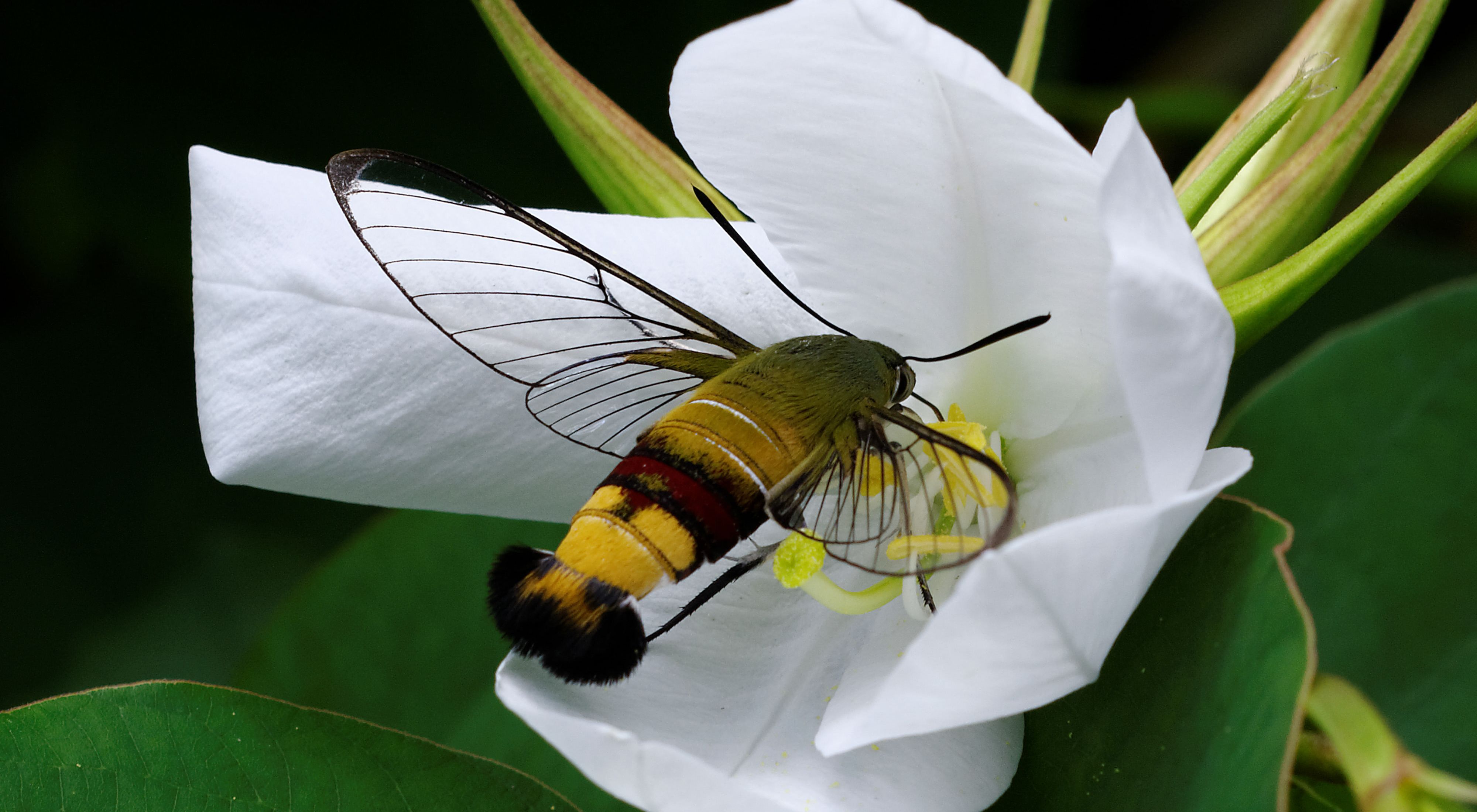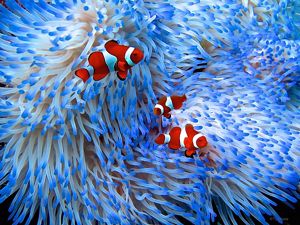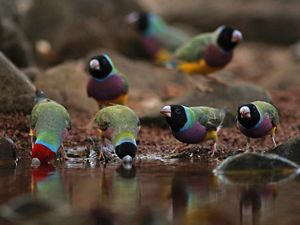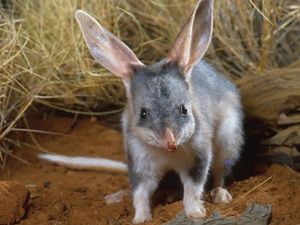Some 180 million years ago, the super continent of Gondwana split. One of the breakaway landmasses from that separation, contained what would become Australia and Antarctica. By 30 million years ago Australia had fully separated and journeyed north on its own. Since then, changes in land formation and climate, and the physical separation from the rest of the world, led to the unique flora and fauna that we know in Australia today. More than 80% of our plants, mammals, reptiles and frogs are unique to Australia and are found nowhere else in the world.
Some of our Australian animals are very well known like kangaroos, dingos, wallabies and wombats and of course the koala, platypus and echidna. But, there is still so much we don’t know about Australia’s native animals. Here we explore weird and wonderful fun facts about 10 of them.
10. Fitzroy River Turtle
This freshwater turtle has acquired quite a reputation as a bum-breather. That’s right, it breathes through its backside. This special adaptation enables it to remain underwater for an incredible 21 days at a time to feed underwater for longer periods and hide from predators. This turtle can only be found in the Fitzroy Basin in south-eastern Queensland. Sadly, feral animals like foxes, cats and pigs, as well as pollution, murky water and sedimentation have rendered them Vulnerable according to the IUCN list of threatened species.
To get the most out of their toe daggers, cassowaries can jump feet first, so their claws can slash downward in mid-air towards their target.
They sure can run too, with a top running speed of 50 km/h through dense forest. Not only that, they’re good swimmers, with the ability to cross wide rivers and swim in the sea. That’s one animal you don’t want to be chased by!
9. Australian Southern Cassowary
What’s scarier than a 60kg modern ‘dinosaur’ with killer claws? One that can leap 1.5 metres off the ground. To get the most out of their toe daggers, cassowaries can jump feet first, so their claws can slash downward in mid-air towards their target.
They’re great sprinters too, with a top running speed of 50 km/h through dense forest. Not only that, they’re good swimmers, with the ability to cross wide rivers and swim in the sea. That’s one animal you don’t want to be chased by!

8. Saltwater Crocodile
The Saltwater Crocodile (also known as Estuarine Crocodile) is a near-perfect predator—the result of millions of years of evolution. It is a ferocious, expert hunter that commands respect and fear. The salty is the largest reptile in the world with adult males growing up to 6m in length and weighing 1,000 to 1,200kg.
Did you know? A crocodile cannot sweat, so instead it relies on the process of thermoregulation to control its body temperature. To avoid overheating, it will either go into the water or lie still with jaws agape, allowing cool air to circulate over the skin in its mouth. That’s why you often see them happily basking in the sun with their mouths wide open. This process is crucial for many bodily functions including digestion and movement.

7. Mistletoebird
The pre-poop dancing and bum wiping routine of the Mistletoebird plays a vital role in the life cycle of this little native bird with its highly adapted diet.
After these sweet little red-breasted birds eat mistletoe berries, it defecates by twisting its body sideways, then purposely wipes its poop on the branch its perched on. The seeds of the berries, which are still intact, are sticky after passing through the digestive tract of the bird. These sticky seeds cling to the branch of their host tree and grow.
The parasitic mistletoe only grows high up on other trees and so this relationship ensures both the bird and bush can survive.

6. Tasmanian Devil
The Tasmanian Devil, once seen throughout mainland Australia, can now only be found in Tasmania. It plays a crucial role in Tasmania’s ecosystem by performing a natural pest control on introduced animals that threaten Tasmania’s native wildlife. It’s the only native animal to successfully outwit introduced species such as feral cats and red foxes. While the devil is around, it’s difficult for feral cats and foxes to breed in Tasmania which is good news—especially for our native animals that have a better chance of survival as a consequence. The devil can, for example, quickly sniff out foxes whose dens are extremely smelly. Such helpful little devils!
Unfortunately, it is listed as Endangered according to the IUCN Red List, with a decline of more than 60% in the last 10 years, mainly due to a contagious facial tumour disease.
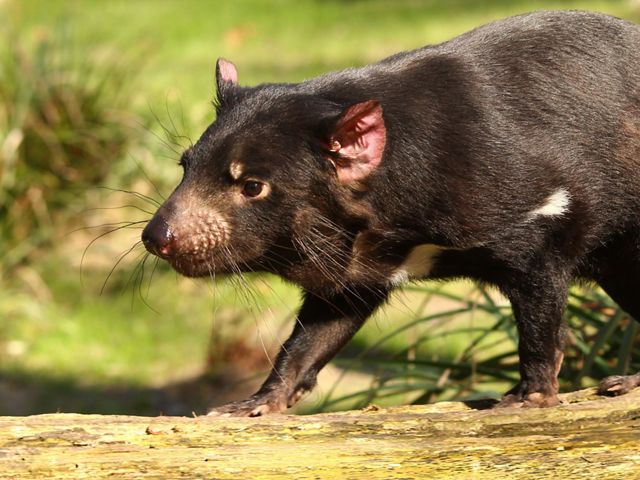
5. Short-beaked Echidna
The Echidna has porcupine-like spines, a bird-like beak, quoll-like pouch and lays eggs like a reptile. It also feeds their young on milk (like all mammals) but have no nipples – the milk just oozes out of the skin in the pouch and the puggle (baby echidna) licks it up. This strange mix of characteristics is why it’s named after “Echidna”, a creature from Greek mythology who was half-woman and half-snake, as the animal was perceived to have qualities of both mammal and reptile.
There are four species of echidnas, including the Short-beaked Echidna found throughout Australia in places like the Great Western Woodlands.

4. Laughing Kookaburra
Many of us are very familiar with the Laughing Kookaburra’s call usually at dusk and dawn, but what does their call mean? This family oriented bird does its communal call to establish the territory of the family unit and warn off other kookaburras. The family unit may vocalise together like a chorus to amplify their claim to their territory. If any rival families are within earshot they too may respond.
Interestingly, researchers have found that members of a family unit laugh in a similar manner. The kookaburra’s lauch is a social behaviour, so if it’s held in captivity alone, it won’t laugh.

3. Numbat
The Numbat is an endangered small marsupial that survives in southwest Western Australia. Due to its small size, the Numbat is hunted by many animals like feral cats, foxes, dingoes and birds of prey. Because it solely on termites which are active by day, the Numbat is the only diurnal (opposite of nocturnal) marsupial.
It spends nights hiding in hollow logs or burrows that are too narrow for its predators to enter. To further protect itself from predators at night, it uses its very thick-skinned rump to block the entrance. Now that’s using your behind to get ahead.

2. Pellucid Hawk Moth
The Pellucid Hawk Moth looks partly moth, partly cicada, and partly Glasswing Butterfly. According to the Australian Geographic, very few species of Lepidoptera, the insect order which includes all butterflies and moths, have scaleless, transparent wings.
Coloured wings can serve many functions, including communication, defence, thermoregulation, feeding, and waterproofing. So why the transparent wings? It’s thought these wings reflect about 50% less light than opaque ones, rendering the wings almost invisible in flight. It’s like an invisibility cloak which makes it a great defence against becoming prey.

1. Thylacine (Tasmanian Tiger)
Over 80 years ago the last Thylacine sadly died at Hobart Zoo. It earned its more common name at the time, Tasmanian Tiger, because of the distinctive tiger-like stripes along its lower back and tail.
In fact, this was no tiger or Tasmanian Wolf, as it was also known, but a marsupial and therefore not closely related to cats or dogs at all. It had the characteristic pouch of other Australian national treasures such as the wombat, koala and kangaroo. In most marsupial species, only females possess pouches, which they use to suckle and protect their young. Oddly enough, Thylacine males had pouches too. It acted like a protective sheath to cover their external reproductive organs when running through thick bush.
That’s not the only similarity to other marsupials. The Thylacine had strong hind legs which were longer than its front legs. It also had a strong stiff tail similar to that of a kangaroo. This, together with its rigid tail, gave the Thylacine a stiff awkward walk not suitable for sprinting. What is really unusual, is that it could stand upright on its hind legs with its tail acting as a tripod support, just like a kangaroo! It could hop short distances which was its quickest form of getaway when it was frightened or alarmed.

Help protect Australia’s threatened species
Our planet is currently experiencing the worst wave of species die-offs since the loss of the dinosaurs 65 million years ago. And here in Australia,86 of our native flora and fauna species now critically endangered. We're running a real risk of losing some of our most iconic species forever.
Habitat destruction, introduced species and urban expansion threaten the survival of our native species. With the decline of Australia’s native wildlife, our ecosystem hangs in the balance. Once they’re gone, they’re gone.
